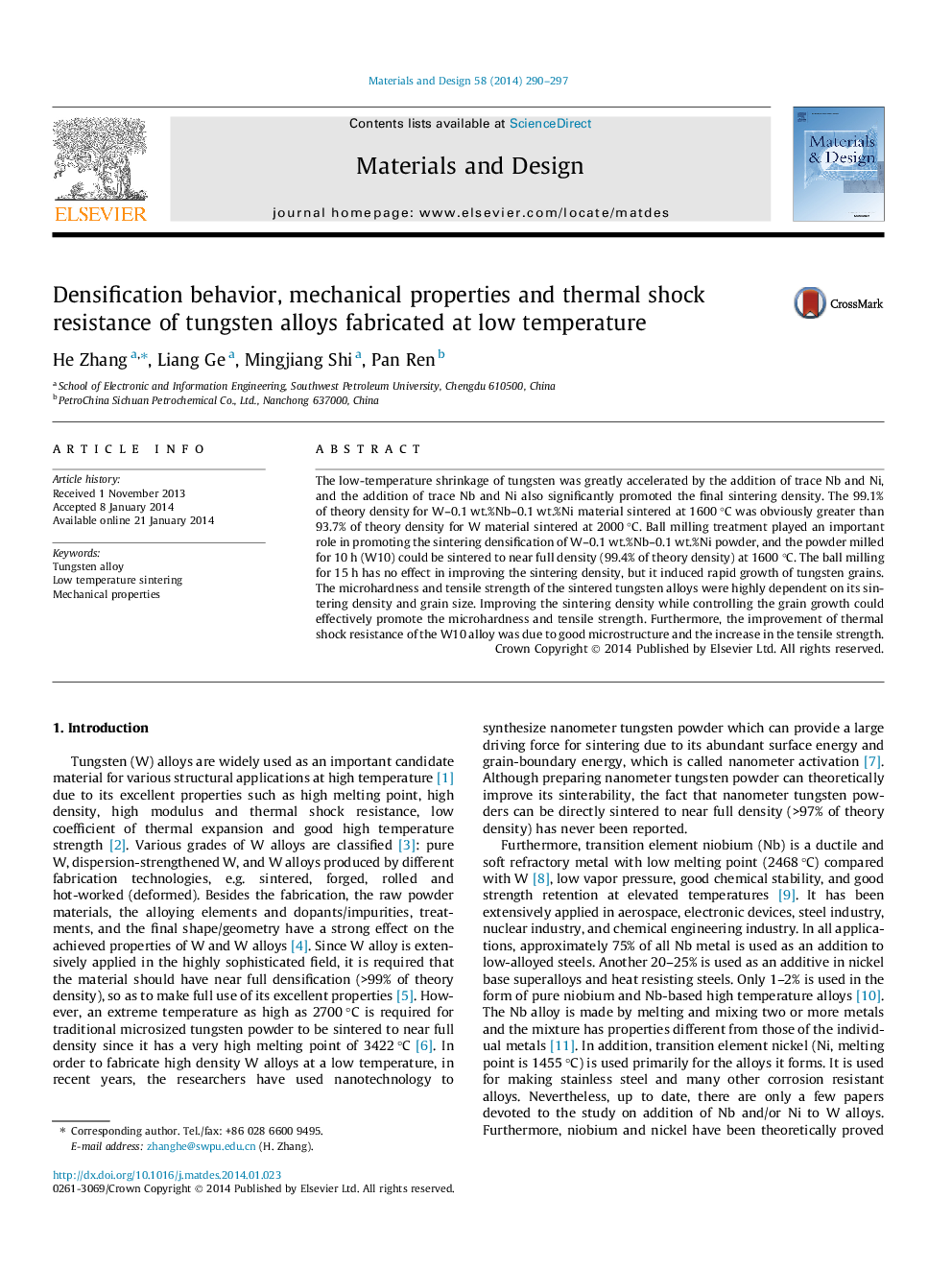| Article ID | Journal | Published Year | Pages | File Type |
|---|---|---|---|---|
| 829279 | Materials & Design (1980-2015) | 2014 | 8 Pages |
•It is first to investigate thermal shock resistance of tungsten alloys.•Effects of trace Nb and Ni on tungsten alloys was firstly investigated.•Tungsten alloys with near full density was prepared at 1600 °C.
The low-temperature shrinkage of tungsten was greatly accelerated by the addition of trace Nb and Ni, and the addition of trace Nb and Ni also significantly promoted the final sintering density. The 99.1% of theory density for W–0.1 wt.%Nb–0.1 wt.%Ni material sintered at 1600 °C was obviously greater than 93.7% of theory density for W material sintered at 2000 °C. Ball milling treatment played an important role in promoting the sintering densification of W–0.1 wt.%Nb–0.1 wt.%Ni powder, and the powder milled for 10 h (W10) could be sintered to near full density (99.4% of theory density) at 1600 °C. The ball milling for 15 h has no effect in improving the sintering density, but it induced rapid growth of tungsten grains. The microhardness and tensile strength of the sintered tungsten alloys were highly dependent on its sintering density and grain size. Improving the sintering density while controlling the grain growth could effectively promote the microhardness and tensile strength. Furthermore, the improvement of thermal shock resistance of the W10 alloy was due to good microstructure and the increase in the tensile strength.
